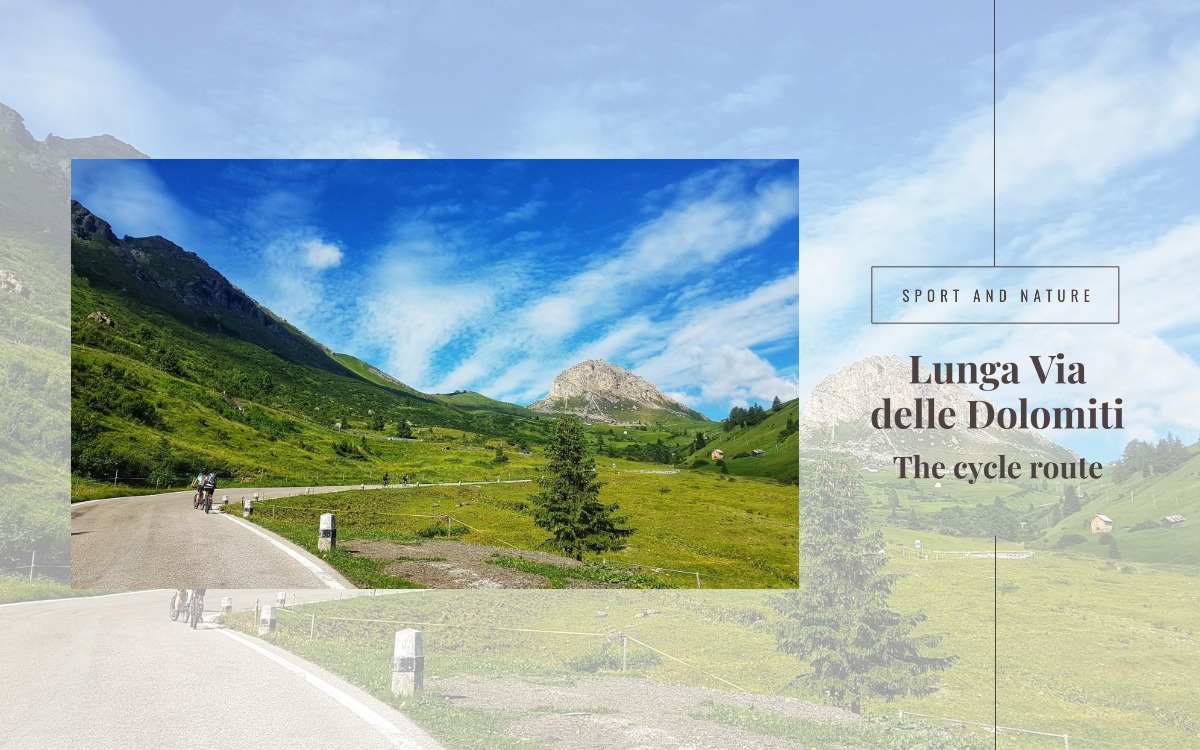The Dolomites are one of the most beautiful jewels of Italy, declared a UNESCO World Heritage Site: they lie in the heart of the Eastern Alps, with the special dolomite rock, so light that it gives the Dolomites the nickname of Pale Mountains.
There are many ways to discover the scenic and historical beauty of the Dolomites and the bicycle is one of these, an indispensable means for those who want to experience a green holiday, in contact with nature.
There are many paths that cross the length and breadth of the Pale Mountains, among which the Lunga Via delle Dolomiti cycle path stands out. Over about 60 km, it crosses the main Dolomite towns, in particular those of Cadore and Valle del Boite.
Every year many tourists choose to spend a holiday of total relaxation without the stress of driving their own car: they use the transport network that connects some Dolomite towns such as S. Vito di Cadore, Cortina d’Ampezzo and Tai di Cadore to Venetian cities such as Mestre, Venice and Treviso.
The Lunga Via dell Dolomiti: from Dobbiaco to Cortina d’Ampezzo
The Lunga Via delle Dolomiti is one of the most visually arresting and scenic cycle paths that, connecting Dobbiaco to Calalzo di Cadore, crosses streams, lakes, dense woods and picturesque villages.
In the background, imperious and captivating, there are the Dolomite peaks, among which the Tre Cime di Lavaredo, the Sassolungo, the Cinque Torri, the Antelao, the Sorapiss, the Marmolada and the Tofane stand out.
There is no better way to discover the beauty, traditions, legends and history of the Natural Park of the Ampezzo Dolomites.
You ride on what used to be the route of the old narrow-gauge railway, built during the Great War and used until the 60s: it is not a difficult route as, apart from the stretch between Cortina and S. Vito di Cadore which includes steep ups and downs and frequent zigzags, the track has slight slopes, is paved, has gentle dirt tracks and is closed to traffic.
The first part of the journey along the Lunga Via delle Dolomiti starts from Dobbiaco, in Alta Pusteria, and ends in Cortina, in a stretch that in winter becomes a cross-country ski track.
After a visit to the Zeiller altars in the Church of San Giovanni Battista and to the Herbstenburg Castle, you cycle towards the Dobbiaco and Landro lakes, up to Carbonin, today a tourist village but in the past a holiday resort for kings and queens.
You arrive at the Cimabanche pass, the natural border between the Val Pusteria and the Valle d’Ampezzo: passing the picturesque Lago Nero and Lago Bianco, you pass Ospitale, an ancient resting place for pilgrims and wayfarers that also has a church dedicated to the saints Nicolò and Biagio dating back to the thirteenth century.
Passing tunnels dug into the rock, iron bridges, old stations like that of Fiames and gurgling torrents, you reach Cortina.
From Cortina to Calalzo di Cadore
A visit to the Pearl of the Dolomites is a must, between the Basilica where a beautiful Brustolon altar is kept and the “Rinaldo Zardini Paleontological Museum” with its wealth of fossils dating back to 230 million years ago.
The second stage of the Lunga Via delle Dolomiti begins from Cortina, and crosses the Valle del Boite to S. Vito di Cadore, a Cadore village inhabited by man since ancient times (in fact, an ancient Mesolithic burial site was found here, belonging to a man who presumably lived 7000 years ago).
After a visit to the late Gothic church of the Madonna della Difesa from the fifteenth century, you can continue towards Lake Mosigo and Borca di Cadore: located between Antelao and Monte Pelmo, the village preserves a priceless Callido organ inside the Parish Church.
The fourth stage of the Lunga Via delle Dolomiti continues along the course of the Boite river, a tributary of the legendary “Fiume Sacro alla Patria”, the Piave.
After passing the Mulino Varettoni, you arrive at Vodo di Cadore, whose spectacular hamlet of Vinigo is perched like a nativity scene on a rocky spur.
You continue to ride alongside the village of Cibiana, famous for its murals created by international artists and for the “Museum in the Clouds” built on Mount Rite by the famous mountaineer Reinhold Messner.
Along the route, you cross ancient stopping places in Art Nouveau style and stone tunnels, before reaching the ancient village of Valle di Cadore, with its elegant Venetian-style buildings, traditional Cadore houses and the 12th century Church of San Martino.
Going beyond Tai di Cadore, the Lunga Via delle Dolomiti leads to Pieve di Cadore, the birthplace of Titian, a great Renaissance painter whose home can also be visited: the sixteenth-century palace, seat of the “Magnifica Comunità di Cadore”, is also unmissable, as is the museum dedicated to this organization founded in 1338 and the Eyewear Museum, full of pieces of every style and era.
The Lunga Via delle Dolomiti ends in Calalzo di Cadore, from where you can walk to the spectacular Cascata delle Pile waterfall.




